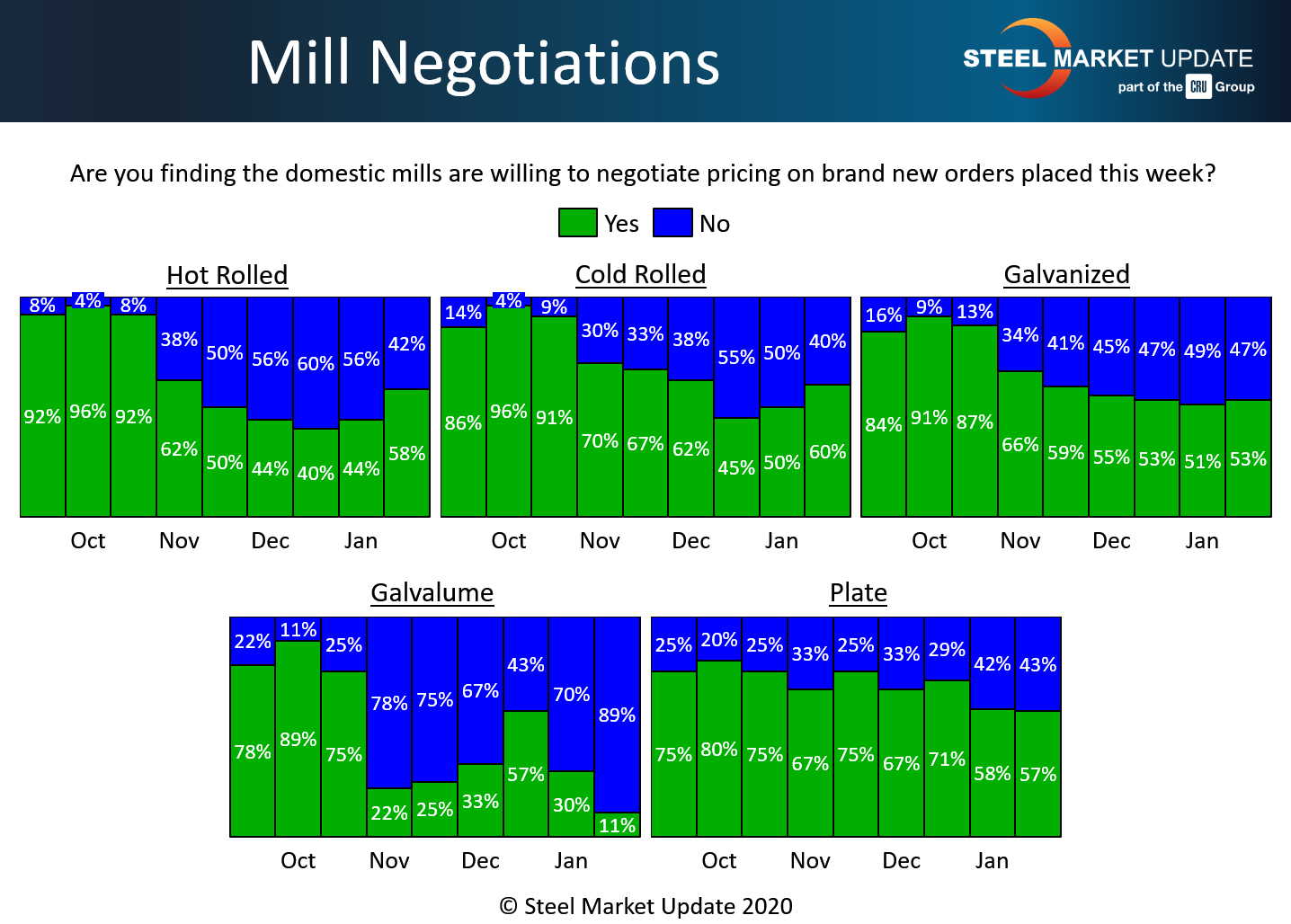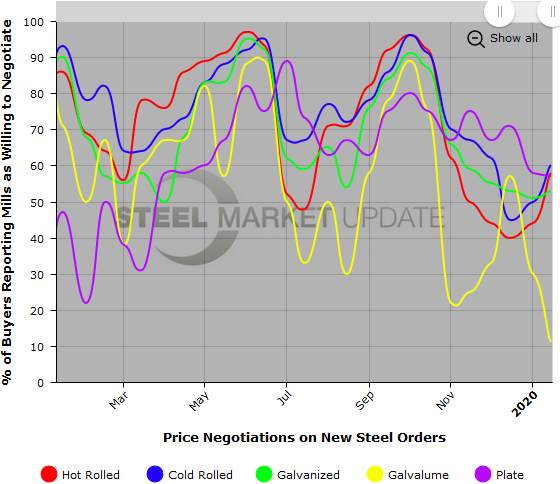SMU Data and Models

Steel Mill Negotiations: Most Products Continue to See Prices as Somewhat Negotiable
Written by Tim Triplett
January 23, 2020
Negotiations between steelmakers and steel buyers on new spot orders appear to have loosened slightly on hot rolled and cold rolled, but not to levels we saw in late 3rd quarter 2019.
In the hot rolled segment, the majority of buyers (58 percent) said the mills are now more willing to negotiate prices on HR, up 14 points from two weeks ago. The percentage reporting mills holding the line on HR decline from 56 to 42 percent.
The cold rolled segment saw a similar, 10-point swing with 60 percent of buyers now reporting mills willing to talk price on CR to win the order.
The change was less pronounced in galvanized where a slightly higher majority (53 percent) of buyers said the mills were flexible in terms of pricing last week. Considerably more Galvalume buyers (89 percent) reported the mills holding the line.
There was little change in plate talks in the past two weeks, as 57 percent reported the plate mills open to negotiations.
Benchmark hot rolled steel prices declined by $20 in the first half of January to an average of $590 per ton, according to SMU’s canvass of the market this week. That dovetails with this negotiations data, which suggests that more mills are discounting to secure orders.
Note: SMU surveys active steel buyers twice each month to gauge the willingness of their steel suppliers to negotiate pricing. The results reflect current steel demand and changing spot pricing trends. SMU provides our members with a number of ways to interact with current and historical data. To see an interactive history of our Steel Mill Negotiations data (example below), visit our website here.



Tim Triplett
Read more from Tim TriplettLatest in SMU Data and Models

SMU Scrap Survey: Sentiment Indices rise
Both current and future scrap sentiment jumped this month, though survey participants reported responses before key trade news was announced.

SMU Survey: Sentiment splits, buyers have better view of future than the present
SMU’s Steel Buyers’ Sentiment Indices moved in opposite directions this week. After rebounding from a near five-year low in late June, Current Sentiment slipped again. At the same time, Future Sentiment climbed to a four-month high. Both indices continue to show optimism among buyers about their company’s chances for success, but suggest there is less confidence in that optimism than earlier in the year.

SMU scrap market survey results now available
SMU’s ferrous scrap market survey results are now available on our website to all premium members. After logging in at steelmarketupdate.com, visit the pricing and analysis tab and look under the “survey results” section for “ferrous scrap survey” results. Past scrap survey results are also available under that selection. If you need help accessing the survey results […]

SMU flat-rolled market survey results now available
SMU’s latest steel buyers market survey results are now available on our website to all premium members. After logging in at steelmarketupdate.com, visit the pricing and analysis tab and look under the “survey results” section for “latest survey results.” Past survey results are also available under that selection. If you need help accessing the survey results, or if […]

SMU Survey: Sheet lead times stabilize, plate contracts
Mill lead times for sheet products were steady to slightly longer this week compared to our late June market check, while plate lead times contracted, according to steel buyers responding to this week’s market survey.
